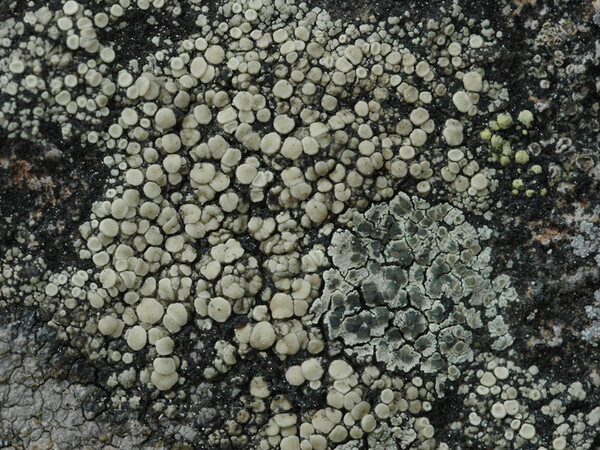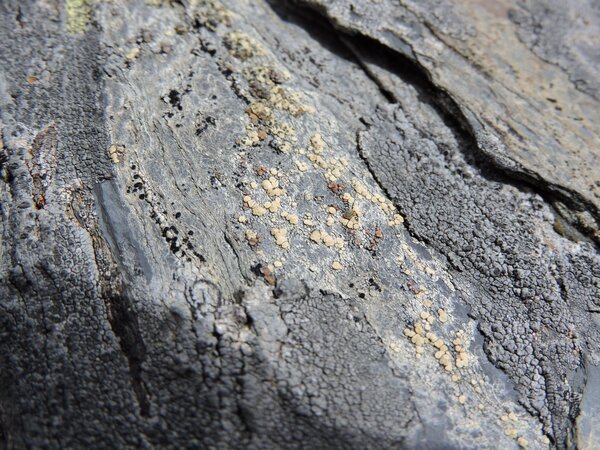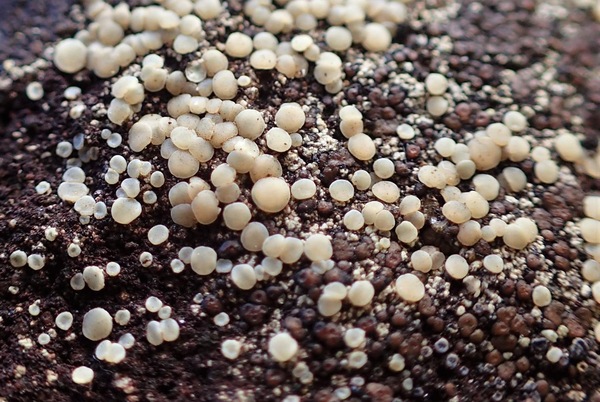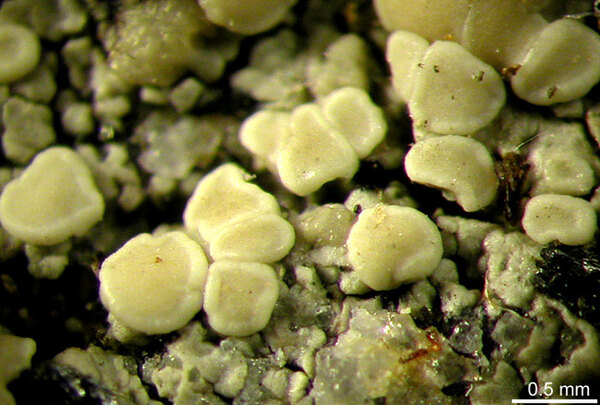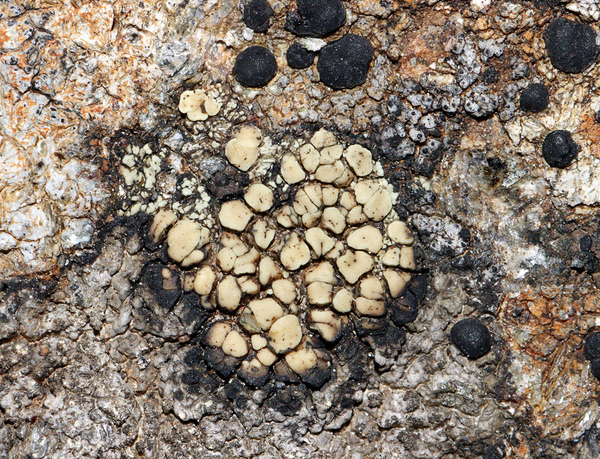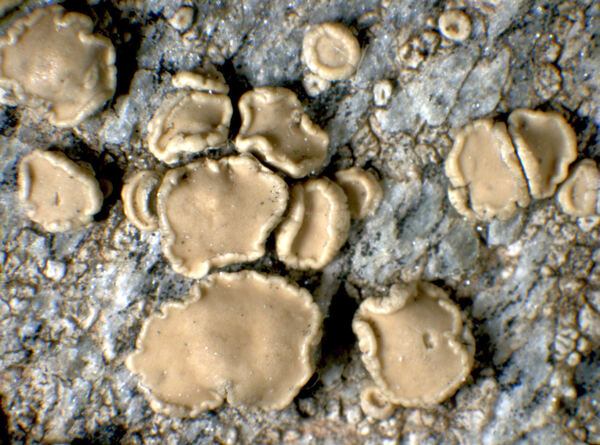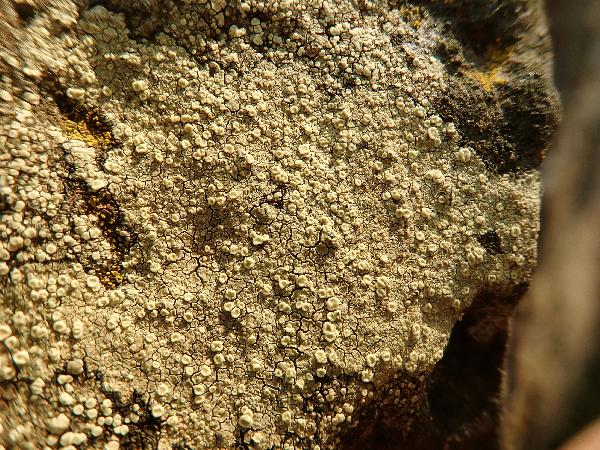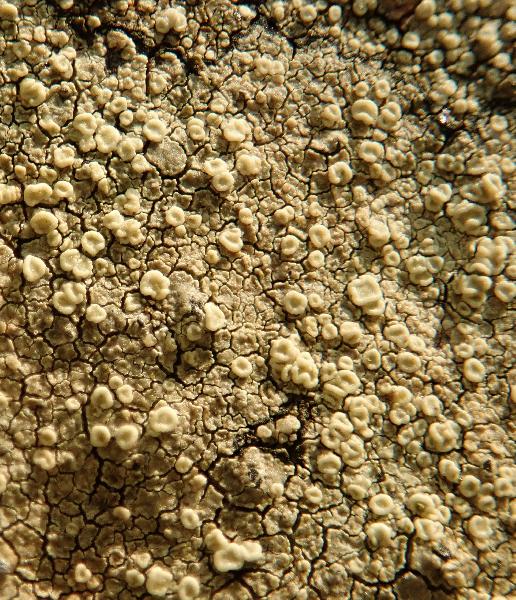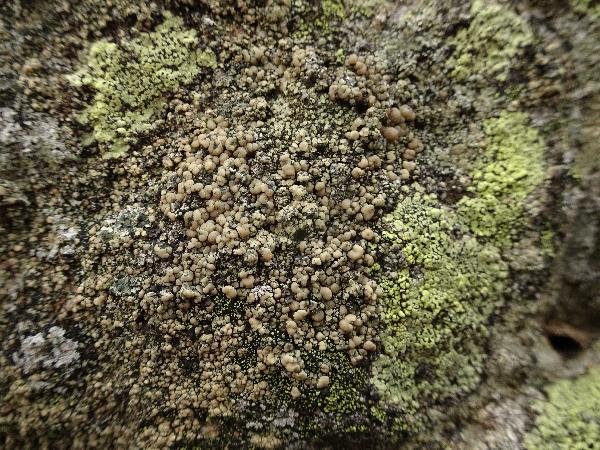Lecanora polytropa (Hoffm.) Rabenh.
Deutsch. Krypt.-Fl., 2: 37, 1845. Basionym: Verrucaria polytropa Ehrh. ex Hoffm. - Deutschl. Fl.: 196, 1796.
Synonyms: Biatora polytropa (Hoffm.) Fr.; Biatora polytropa var. vulgaris Körb.; Lecanora ehrhartiana var. polytropa (Hoffm.) Sommerf.; Lecanora polytropa (Hoffm.) Rabenh. var. polytropa; Lecanora polytropa f. campestris (Wallr.) Rabenh.; Lecanora polytropa f. illusoria (Ach.) Leight.; Lecanora polytropa f. inops Bagl.
Distribution: N - VG (Castello 2002, Martellos & Castello 2004), Frl (Tretiach & Hafellner 2000), Ven (Caniglia & al. 1999, Nascimbene & Caniglia 2000, Nascimbene 2005c), TAA (Caniglia & al. 2002, Nascimbene 2003, 2005b, 2006c, 2008b, Lang 2009, Calatayud & al. 2013, Nascimbene & al. 2022, Hafellner 2023), Lomb (Dalle Vedove & al. 2004, Brackel 2013, Gheza 2019b, Brackel 2025), Piem (Isocrono & Falletti 1999, Isocrono & al. 2003, 2004, 2006, Favero-Longo & al. 2006b, 2015, Isocrono & Piervittori 2008, Giordani & al. 2014), VA (Borlandelli & al. 1996, Piervittori & Isocrono 1997, 1999, Piervittori & al. 1998, 2001, 2004, Valcuvia 2000, Matteucci & al. 2008c, 2013b, 2015c, Isocrono & al. 2008, Favero-Longo & Piervittori 2009), Emil (Dalle Vedove & al. 2002, Tretiach & al. 2008, Fariselli & al. 2020, Brackel 2025), Lig (Ravera & al. 2022, Brackel 2025). C - Tosc (Benesperi 2006, Tretiach & al. 2008, Calatayud & al. 2013, Brackel 2015), Umb (Panfili 2000, Ravera & al. 2006), Abr (Brackel 2015), Sar (Monte 1993, Nöske 2000, Rizzi & al. 2011, Brackel & Berger 2019). S - Camp, Cal (Puntillo 1996, Brackel & Puntillo 2016, Brackel 2025), Si (Grillo 1998, Grillo & Caniglia 2004, Brackel 2008b, 2008c).
Description: Thallus crustose, poorly evident to thinly rimose-areolate and in this case usually reduced to scattered granules or areoles around the apothecia, yellowish green to pale grey-green, without a distinct prothallus. Cortex with a thin epinecral layer of dead cells and crystals, and a thicker paraplectenchymatous layer which in upper part contains small yellowish crystals and somehow larger colourless crystals partially soluble in N, totally soluble in K. Apothecia lecanorine, sessile, constricted at base, round to irregular in outline, 0.3-2.5(-3) mm across, with a pale yellow-brown or pale yellow-green (turning brownish in the herbarium), concave to finally convex disc and a thin, entire to more or less crenulate, finally often excluded thalline margin. Cortex of thalline exciple with an outer layer of granules, strongly gelatinized; epithecium colourless to pale reddish brown, with granular crystals soluble in K; hymenium colourless, 45-60(-80) µm high; paraphyses sparingly branched and anastomosing, 1.2-2 µm thick in lower part, slightly thickened at apex; hypothecium pale yellowish brown. Asci 8-spored, clavate, Lecanora-type. Ascospores 1-celled, hyaline, ellipsoid, (8-)10-13(-14.5) x (4-)5-6.5(-7) μm. Pycnidia immersed, with a pale yellow-brown ostiole, Conidia acicular to arcuate, (12-)18-22(-25) x c. 1 µm. Photobiont chlorococcoid. Spot tests: thallus K- or K+ indistinctly yellow, C-, KC+ yellow, P-. Chemistry: usnic acid, rangiformic acid, zeorin.Note: a cool-temperate to arctic-alpine, circumpolar, ecologically wide-ranging lichen found on siliceous rocks wetted by rain, with a wide altitudinal range but most frequent near and above treeline, reaching the nival belt in the Alps, where it is most common. For further details and a key to other species of the entire complex (some of which not yet formally described), see Roux & al. (2022).
Growth form: Crustose
Substrata: rocks
Photobiont: green algae other than Trentepohlia
Reproductive strategy: mainly sexual
Pioneer species
Commonnes-rarity: (info)
Alpine belt: extremely common
Subalpine belt: extremely common
Oromediterranean belt: common
Montane belt: rather common
Submediterranean belt: very rare
Padanian area: absent
Humid submediterranean belt: extremely rare
Humid mediterranean belt: absent
Dry mediterranean belt: absent
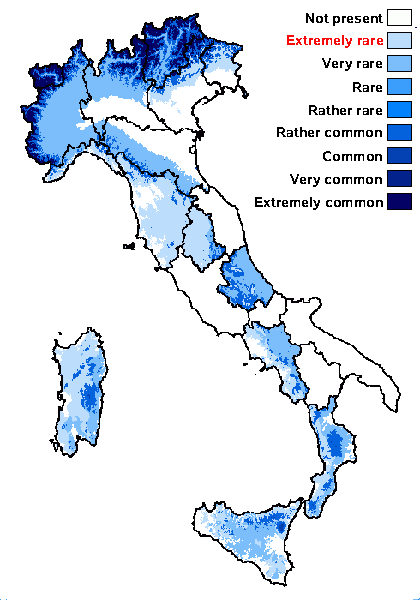
Predictive model
Herbarium samples


Felix Schumm – CC BY-SA 4.0
[14284], Österreich, Vorarlberg, Verwall-Gruppe, Silbertal ca. 7 km E von Schruns, zwischen dem Teufelsbach Wasserfall und dem Gasthof Fellimännle, 47°05' N, 10°00' E, ca 900-1100 m, GF 8926/1, an Silikatfelsen im koniferenreichen Mischwald in Bachnähe. Leg. Schumm & Schönbrodt (BLAM) 30.08.2008, det Schumm 2008
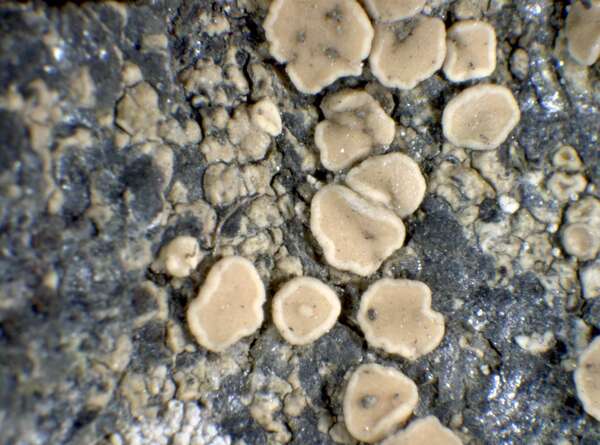

P.L. Nimis; Owner: Department of Life Sciences, University of Trieste
Herbarium: TSB (29454)
2001/12/09

Felix Schumm - CC BY-SA 4.0
[19695], Schweiz, Splügenpass, 46.505244° N, 9.330480° E, 2122 m. Leg. A. Matuschewski Sept. 2017, det. F. Schumm.
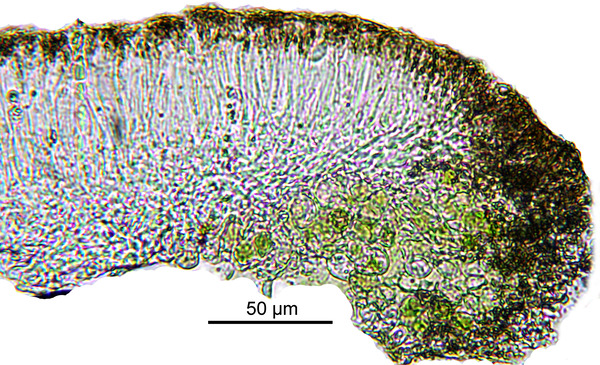

Felix Schumm – CC BY-SA 4.0
[14284], Österreich, Vorarlberg, Verwall-Gruppe, Silbertal ca. 7 km E von Schruns, zwischen dem Teufelsbach Wasserfall und dem Gasthof Fellimännle, 47°05' N, 10°00' E, ca 900-1100 m, GF 8926/1, an Silikatfelsen im koniferenreichen Mischwald in Bachnähe. Leg. Schumm & Schönbrodt (BLAM) 30.08.2008, det Schumm 2008
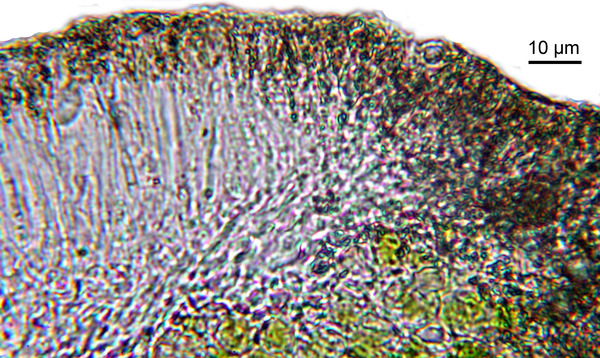

Felix Schumm – CC BY-SA 4.0
[14284], Österreich, Vorarlberg, Verwall-Gruppe, Silbertal ca. 7 km E von Schruns, zwischen dem Teufelsbach Wasserfall und dem Gasthof Fellimännle, 47°05' N, 10°00' E, ca 900-1100 m, GF 8926/1, an Silikatfelsen im koniferenreichen Mischwald in Bachnähe. Leg. Schumm & Schönbrodt (BLAM) 30.08.2008, det Schumm 2008


Felix Schumm – CC BY-SA 4.0
[14284], Österreich, Vorarlberg, Verwall-Gruppe, Silbertal ca. 7 km E von Schruns, zwischen dem Teufelsbach Wasserfall und dem Gasthof Fellimännle, 47°05' N, 10°00' E, ca 900-1100 m, GF 8926/1, an Silikatfelsen im koniferenreichen Mischwald in Bachnähe. Leg. Schumm & Schönbrodt (BLAM) 30.08.2008, det Schumm 2008


Felix Schumm – CC BY-SA 4.0
[14284], Österreich, Vorarlberg, Verwall-Gruppe, Silbertal ca. 7 km E von Schruns, zwischen dem Teufelsbach Wasserfall und dem Gasthof Fellimännle, 47°05' N, 10°00' E, ca 900-1100 m, GF 8926/1, an Silikatfelsen im koniferenreichen Mischwald in Bachnähe. Leg. Schumm & Schönbrodt (BLAM) 30.08.2008, det Schumm 2008
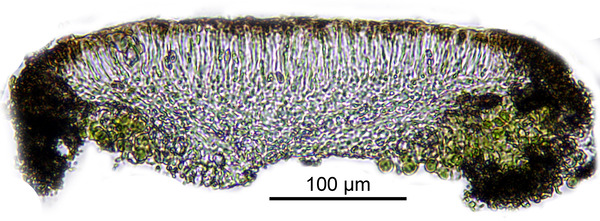

Felix Schumm – CC BY-SA 4.0
[14284], Österreich, Vorarlberg, Verwall-Gruppe, Silbertal ca. 7 km E von Schruns, zwischen dem Teufelsbach Wasserfall und dem Gasthof Fellimännle, 47°05' N, 10°00' E, ca 900-1100 m, GF 8926/1, an Silikatfelsen im koniferenreichen Mischwald in Bachnähe. Leg. Schumm & Schönbrodt (BLAM) 30.08.2008, det Schumm 2008
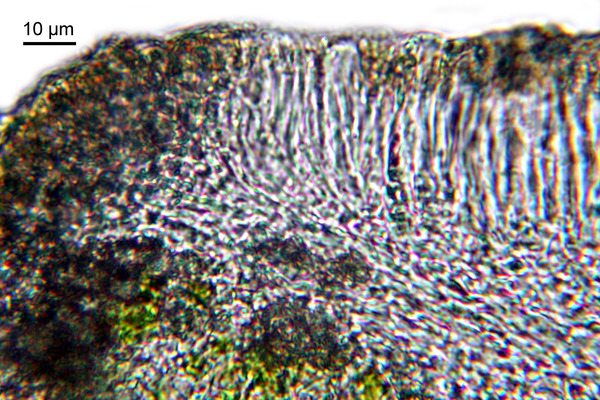

Felix Schumm – CC BY-SA 4.0
[14284], Österreich, Vorarlberg, Verwall-Gruppe, Silbertal ca. 7 km E von Schruns, zwischen dem Teufelsbach Wasserfall und dem Gasthof Fellimännle, 47°05' N, 10°00' E, ca 900-1100 m, GF 8926/1, an Silikatfelsen im koniferenreichen Mischwald in Bachnähe. Leg. Schumm & Schönbrodt (BLAM) 30.08.2008, det Schumm 2008


Felix Schumm – CC BY-SA 4.0
[14284], Österreich, Vorarlberg, Verwall-Gruppe, Silbertal ca. 7 km E von Schruns, zwischen dem Teufelsbach Wasserfall und dem Gasthof Fellimännle, 47°05' N, 10°00' E, ca 900-1100 m, GF 8926/1, an Silikatfelsen im koniferenreichen Mischwald in Bachnähe. Leg. Schumm & Schönbrodt (BLAM) 30.08.2008, det Schumm 2008
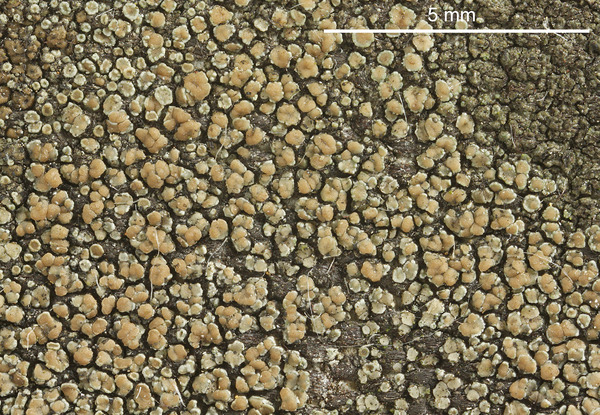

Felix Schumm – CC BY-SA 4.0
[17986], Germany, Baden-Württemberg, Kreis Göppingen, Wangen, Johann-Sebastian-Bach-Str. 14, 48.72438° N, 9.60360° E, 370 m, auf altem Markisenstoff. TK 7223/4. Leg.et det. Schumm 27.04.2012.
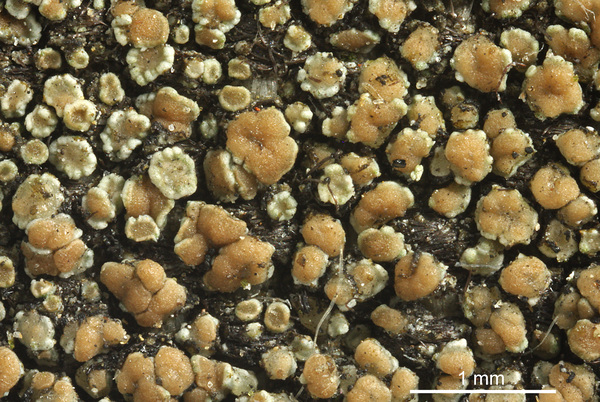

Felix Schumm – CC BY-SA 4.0
[17986], Germany, Baden-Württemberg, Kreis Göppingen, Wangen, Johann-Sebastian-Bach-Str. 14, 48.72438° N, 9.60360° E, 370 m, auf altem Markisenstoff. TK 7223/4. Leg.et det. Schumm 27.04.2012.
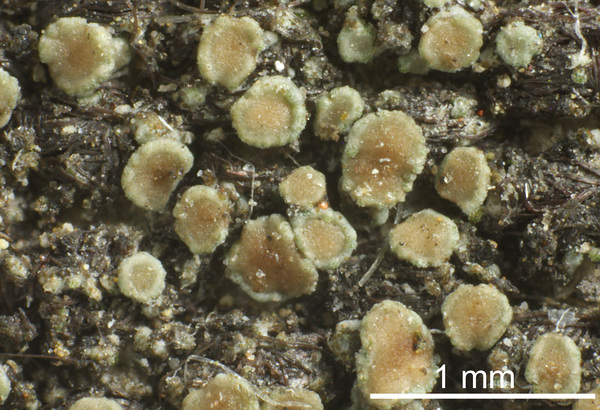

Felix Schumm – CC BY-SA 4.0
[17986], Germany, Baden-Württemberg, Kreis Göppingen, Wangen, Johann-Sebastian-Bach-Str. 14, 48.72438° N, 9.60360° E, 370 m, auf altem Markisenstoff. TK 7223/4. Leg.et det. Schumm 27.04.2012.
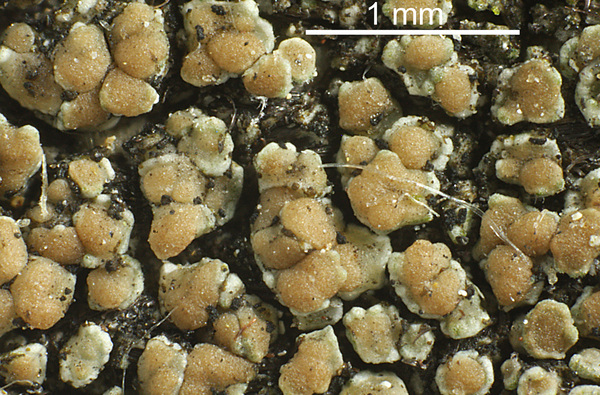

Felix Schumm – CC BY-SA 4.0
[17986], Germany, Baden-Württemberg, Kreis Göppingen, Wangen, Johann-Sebastian-Bach-Str. 14, 48.72438° N, 9.60360° E, 370 m, auf altem Markisenstoff. TK 7223/4. Leg.et det. Schumm 27.04.2012.
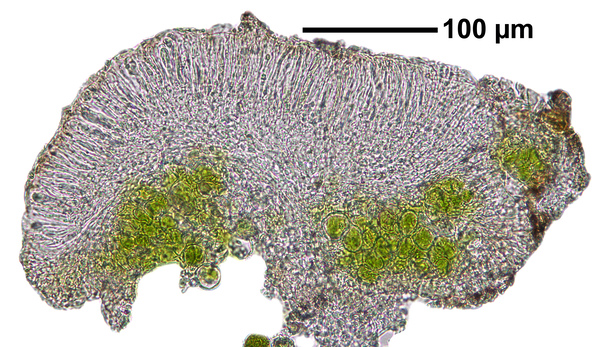

Felix Schumm – CC BY-SA 4.0
[17986], Germany, Baden-Württemberg, Kreis Göppingen, Wangen, Johann-Sebastian-Bach-Str. 14, 48.72438° N, 9.60360° E, 370 m, auf altem Markisenstoff. TK 7223/4. Leg.et det. Schumm 27.04.2012.
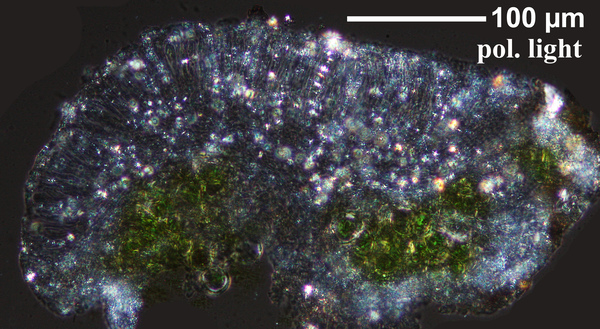

Felix Schumm – CC BY-SA 4.0
[17986], Germany, Baden-Württemberg, Kreis Göppingen, Wangen, Johann-Sebastian-Bach-Str. 14, 48.72438° N, 9.60360° E, 370 m, auf altem Markisenstoff. TK 7223/4. Leg.et det. Schumm 27.04.2012.
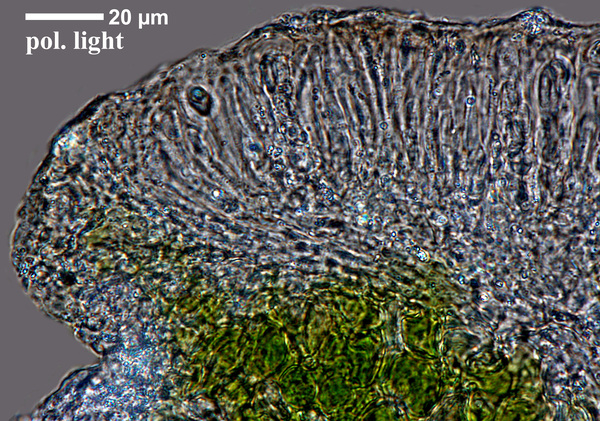

Felix Schumm – CC BY-SA 4.0
[17986], Germany, Baden-Württemberg, Kreis Göppingen, Wangen, Johann-Sebastian-Bach-Str. 14, 48.72438° N, 9.60360° E, 370 m, auf altem Markisenstoff. TK 7223/4. Leg.et det. Schumm 27.04.2012.
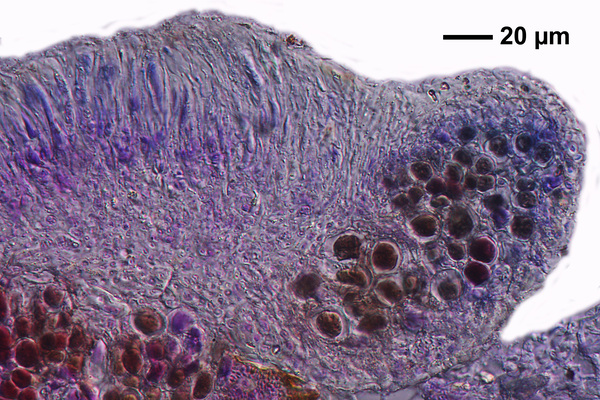

Felix Schumm – CC BY-SA 4.0
[17986], Germany, Baden-Württemberg, Kreis Göppingen, Wangen, Johann-Sebastian-Bach-Str. 14, 48.72438° N, 9.60360° E, 370 m, auf altem Markisenstoff. TK 7223/4. Leg.et det. Schumm 27.04.2012.
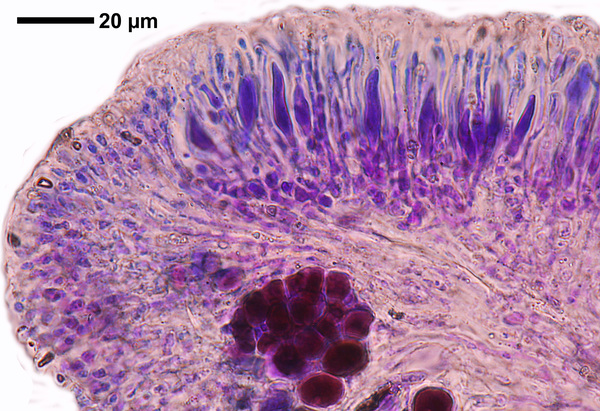

Felix Schumm – CC BY-SA 4.0
[17986], Germany, Baden-Württemberg, Kreis Göppingen, Wangen, Johann-Sebastian-Bach-Str. 14, 48.72438° N, 9.60360° E, 370 m, auf altem Markisenstoff. TK 7223/4. Leg.et det. Schumm 27.04.2012.
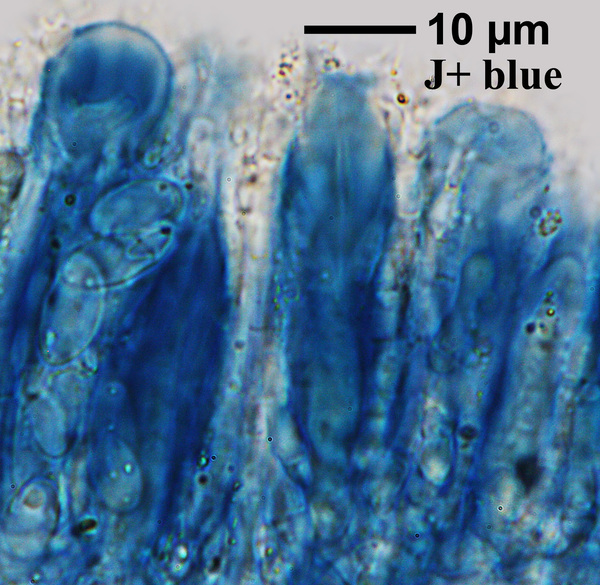

Felix Schumm – CC BY-SA 4.0
[17986], Germany, Baden-Württemberg, Kreis Göppingen, Wangen, Johann-Sebastian-Bach-Str. 14, 48.72438° N, 9.60360° E, 370 m, auf altem Markisenstoff. TK 7223/4. Leg.et det. Schumm 27.04.2012.
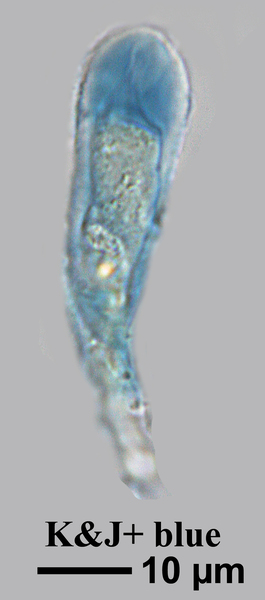

Felix Schumm – CC BY-SA 4.0
[17986], Germany, Baden-Württemberg, Kreis Göppingen, Wangen, Johann-Sebastian-Bach-Str. 14, 48.72438° N, 9.60360° E, 370 m, auf altem Markisenstoff. TK 7223/4. Leg.et det. Schumm 27.04.2012.
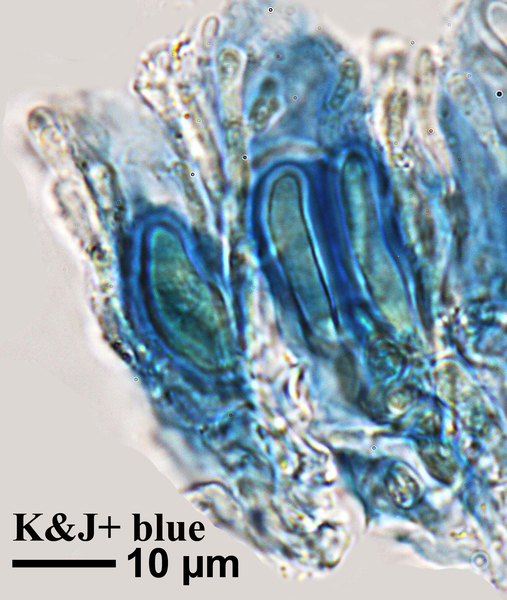

Felix Schumm – CC BY-SA 4.0
[17986], Germany, Baden-Württemberg, Kreis Göppingen, Wangen, Johann-Sebastian-Bach-Str. 14, 48.72438° N, 9.60360° E, 370 m, auf altem Markisenstoff. TK 7223/4. Leg.et det. Schumm 27.04.2012.


Felix Schumm – CC BY-SA 4.0
[17986], Germany, Baden-Württemberg, Kreis Göppingen, Wangen, Johann-Sebastian-Bach-Str. 14, 48.72438° N, 9.60360° E, 370 m, auf altem Markisenstoff. TK 7223/4. Leg.et det. Schumm 27.04.2012.
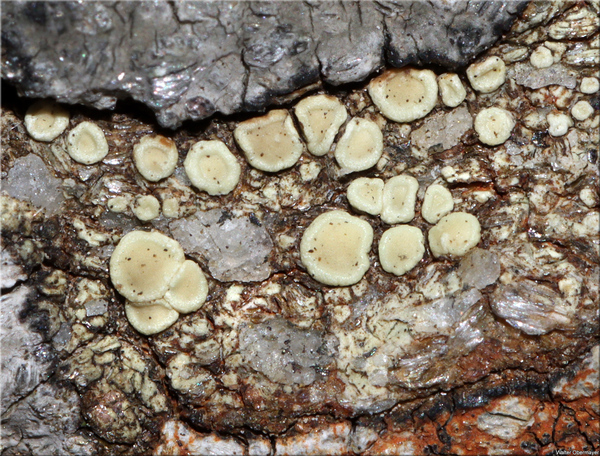
Walter Obermayer CC BY-SA 4.0 - Source: Lichens of Noricum - http://lichens-of-noricum.uni-graz.at/
Austria, Zirbitz
2021

Walter Obermayer CC BY-SA 4.0 - Source: Lichens of Noricum - http://lichens-of-noricum.uni-graz.at/
Austria, Zirbitz
2021

Walter Obermayer CC BY-SA 4.0 - Source: Lichens of Noricum - http://lichens-of-noricum.uni-graz.at/
Austria, Zirbitz
2021
Growth form: Crustose
Substrata: rocks
Photobiont: green algae other than Trentepohlia
Reproductive strategy: mainly sexual
Pioneer species
Commonnes-rarity: (info)
Alpine belt: extremely common
Subalpine belt: extremely common
Oromediterranean belt: common
Montane belt: rather common
Submediterranean belt: very rare
Padanian area: absent
Humid submediterranean belt: extremely rare
Humid mediterranean belt: absent
Dry mediterranean belt: absent

Predictive model
| Herbarium samples |


Felix Schumm – CC BY-SA 4.0
[14284], Österreich, Vorarlberg, Verwall-Gruppe, Silbertal ca. 7 km E von Schruns, zwischen dem Teufelsbach Wasserfall und dem Gasthof Fellimännle, 47°05' N, 10°00' E, ca 900-1100 m, GF 8926/1, an Silikatfelsen im koniferenreichen Mischwald in Bachnähe. Leg. Schumm & Schönbrodt (BLAM) 30.08.2008, det Schumm 2008


P.L. Nimis; Owner: Department of Life Sciences, University of Trieste
Herbarium: TSB (29454)
2001/12/09

Felix Schumm - CC BY-SA 4.0
[19695], Schweiz, Splügenpass, 46.505244° N, 9.330480° E, 2122 m. Leg. A. Matuschewski Sept. 2017, det. F. Schumm.


Felix Schumm – CC BY-SA 4.0
[14284], Österreich, Vorarlberg, Verwall-Gruppe, Silbertal ca. 7 km E von Schruns, zwischen dem Teufelsbach Wasserfall und dem Gasthof Fellimännle, 47°05' N, 10°00' E, ca 900-1100 m, GF 8926/1, an Silikatfelsen im koniferenreichen Mischwald in Bachnähe. Leg. Schumm & Schönbrodt (BLAM) 30.08.2008, det Schumm 2008


Felix Schumm – CC BY-SA 4.0
[14284], Österreich, Vorarlberg, Verwall-Gruppe, Silbertal ca. 7 km E von Schruns, zwischen dem Teufelsbach Wasserfall und dem Gasthof Fellimännle, 47°05' N, 10°00' E, ca 900-1100 m, GF 8926/1, an Silikatfelsen im koniferenreichen Mischwald in Bachnähe. Leg. Schumm & Schönbrodt (BLAM) 30.08.2008, det Schumm 2008


Felix Schumm – CC BY-SA 4.0
[14284], Österreich, Vorarlberg, Verwall-Gruppe, Silbertal ca. 7 km E von Schruns, zwischen dem Teufelsbach Wasserfall und dem Gasthof Fellimännle, 47°05' N, 10°00' E, ca 900-1100 m, GF 8926/1, an Silikatfelsen im koniferenreichen Mischwald in Bachnähe. Leg. Schumm & Schönbrodt (BLAM) 30.08.2008, det Schumm 2008


Felix Schumm – CC BY-SA 4.0
[14284], Österreich, Vorarlberg, Verwall-Gruppe, Silbertal ca. 7 km E von Schruns, zwischen dem Teufelsbach Wasserfall und dem Gasthof Fellimännle, 47°05' N, 10°00' E, ca 900-1100 m, GF 8926/1, an Silikatfelsen im koniferenreichen Mischwald in Bachnähe. Leg. Schumm & Schönbrodt (BLAM) 30.08.2008, det Schumm 2008


Felix Schumm – CC BY-SA 4.0
[14284], Österreich, Vorarlberg, Verwall-Gruppe, Silbertal ca. 7 km E von Schruns, zwischen dem Teufelsbach Wasserfall und dem Gasthof Fellimännle, 47°05' N, 10°00' E, ca 900-1100 m, GF 8926/1, an Silikatfelsen im koniferenreichen Mischwald in Bachnähe. Leg. Schumm & Schönbrodt (BLAM) 30.08.2008, det Schumm 2008


Felix Schumm – CC BY-SA 4.0
[14284], Österreich, Vorarlberg, Verwall-Gruppe, Silbertal ca. 7 km E von Schruns, zwischen dem Teufelsbach Wasserfall und dem Gasthof Fellimännle, 47°05' N, 10°00' E, ca 900-1100 m, GF 8926/1, an Silikatfelsen im koniferenreichen Mischwald in Bachnähe. Leg. Schumm & Schönbrodt (BLAM) 30.08.2008, det Schumm 2008


Felix Schumm – CC BY-SA 4.0
[14284], Österreich, Vorarlberg, Verwall-Gruppe, Silbertal ca. 7 km E von Schruns, zwischen dem Teufelsbach Wasserfall und dem Gasthof Fellimännle, 47°05' N, 10°00' E, ca 900-1100 m, GF 8926/1, an Silikatfelsen im koniferenreichen Mischwald in Bachnähe. Leg. Schumm & Schönbrodt (BLAM) 30.08.2008, det Schumm 2008


Felix Schumm – CC BY-SA 4.0
[17986], Germany, Baden-Württemberg, Kreis Göppingen, Wangen, Johann-Sebastian-Bach-Str. 14, 48.72438° N, 9.60360° E, 370 m, auf altem Markisenstoff. TK 7223/4. Leg.et det. Schumm 27.04.2012.


Felix Schumm – CC BY-SA 4.0
[17986], Germany, Baden-Württemberg, Kreis Göppingen, Wangen, Johann-Sebastian-Bach-Str. 14, 48.72438° N, 9.60360° E, 370 m, auf altem Markisenstoff. TK 7223/4. Leg.et det. Schumm 27.04.2012.


Felix Schumm – CC BY-SA 4.0
[17986], Germany, Baden-Württemberg, Kreis Göppingen, Wangen, Johann-Sebastian-Bach-Str. 14, 48.72438° N, 9.60360° E, 370 m, auf altem Markisenstoff. TK 7223/4. Leg.et det. Schumm 27.04.2012.


Felix Schumm – CC BY-SA 4.0
[17986], Germany, Baden-Württemberg, Kreis Göppingen, Wangen, Johann-Sebastian-Bach-Str. 14, 48.72438° N, 9.60360° E, 370 m, auf altem Markisenstoff. TK 7223/4. Leg.et det. Schumm 27.04.2012.


Felix Schumm – CC BY-SA 4.0
[17986], Germany, Baden-Württemberg, Kreis Göppingen, Wangen, Johann-Sebastian-Bach-Str. 14, 48.72438° N, 9.60360° E, 370 m, auf altem Markisenstoff. TK 7223/4. Leg.et det. Schumm 27.04.2012.


Felix Schumm – CC BY-SA 4.0
[17986], Germany, Baden-Württemberg, Kreis Göppingen, Wangen, Johann-Sebastian-Bach-Str. 14, 48.72438° N, 9.60360° E, 370 m, auf altem Markisenstoff. TK 7223/4. Leg.et det. Schumm 27.04.2012.


Felix Schumm – CC BY-SA 4.0
[17986], Germany, Baden-Württemberg, Kreis Göppingen, Wangen, Johann-Sebastian-Bach-Str. 14, 48.72438° N, 9.60360° E, 370 m, auf altem Markisenstoff. TK 7223/4. Leg.et det. Schumm 27.04.2012.


Felix Schumm – CC BY-SA 4.0
[17986], Germany, Baden-Württemberg, Kreis Göppingen, Wangen, Johann-Sebastian-Bach-Str. 14, 48.72438° N, 9.60360° E, 370 m, auf altem Markisenstoff. TK 7223/4. Leg.et det. Schumm 27.04.2012.


Felix Schumm – CC BY-SA 4.0
[17986], Germany, Baden-Württemberg, Kreis Göppingen, Wangen, Johann-Sebastian-Bach-Str. 14, 48.72438° N, 9.60360° E, 370 m, auf altem Markisenstoff. TK 7223/4. Leg.et det. Schumm 27.04.2012.


Felix Schumm – CC BY-SA 4.0
[17986], Germany, Baden-Württemberg, Kreis Göppingen, Wangen, Johann-Sebastian-Bach-Str. 14, 48.72438° N, 9.60360° E, 370 m, auf altem Markisenstoff. TK 7223/4. Leg.et det. Schumm 27.04.2012.


Felix Schumm – CC BY-SA 4.0
[17986], Germany, Baden-Württemberg, Kreis Göppingen, Wangen, Johann-Sebastian-Bach-Str. 14, 48.72438° N, 9.60360° E, 370 m, auf altem Markisenstoff. TK 7223/4. Leg.et det. Schumm 27.04.2012.


Felix Schumm – CC BY-SA 4.0
[17986], Germany, Baden-Württemberg, Kreis Göppingen, Wangen, Johann-Sebastian-Bach-Str. 14, 48.72438° N, 9.60360° E, 370 m, auf altem Markisenstoff. TK 7223/4. Leg.et det. Schumm 27.04.2012.


Felix Schumm – CC BY-SA 4.0
[17986], Germany, Baden-Württemberg, Kreis Göppingen, Wangen, Johann-Sebastian-Bach-Str. 14, 48.72438° N, 9.60360° E, 370 m, auf altem Markisenstoff. TK 7223/4. Leg.et det. Schumm 27.04.2012.

Walter Obermayer CC BY-SA 4.0 - Source: Lichens of Noricum - http://lichens-of-noricum.uni-graz.at/
Austria, Zirbitz
2021

Walter Obermayer CC BY-SA 4.0 - Source: Lichens of Noricum - http://lichens-of-noricum.uni-graz.at/
Austria, Zirbitz
2021

 INDEX FUNGORUM
INDEX FUNGORUM
 GBIF
GBIF
 DOLICHENS
DOLICHENS
